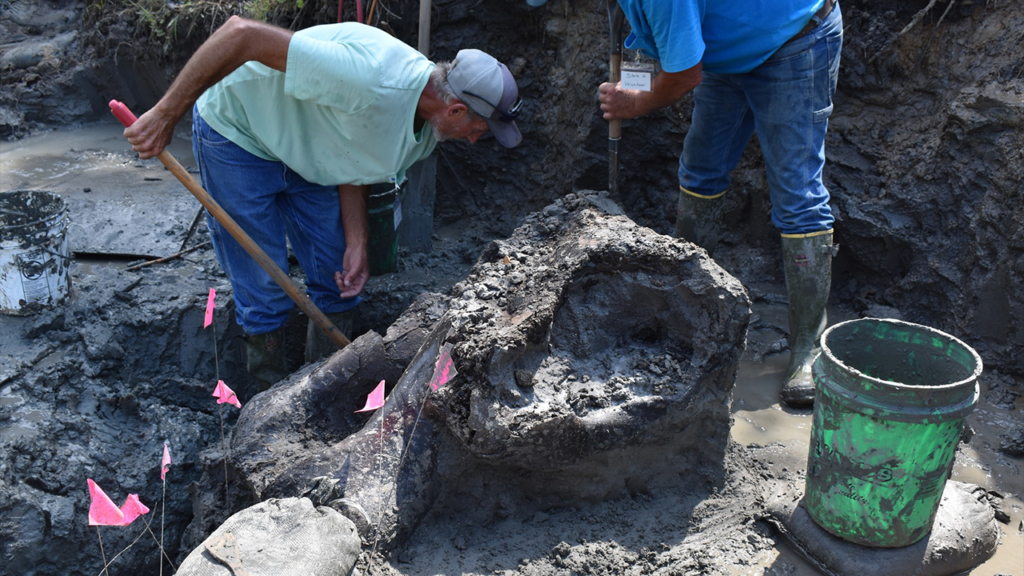Archaeologists in Iowa have unearthed an ancient mastodon skull in pristine condition, which they hope will provide clues about human interaction with the ancient animal.
The bones were excavated earlier this month from a creek bank in Wayne, taking nearly two weeks to complete. The eroding site was first brought to the attention of Office of the State Archaeologist, Iowa (OSA) in 2022.

The excavation took nearly two weeks to complete. (Office of the State Archaeologist, Iowa)
EXCAVATIONS IN EGYPT UNEARTH TROVE OF ANCIENT ARTIFACTS FROM ITS FINAL DYNASTIES
Radiocarbon dating showed that the mastodon is around 13,600 years old, which corresponds to when humans occupied the area.
OSA will closely examine the bones to determine if there is any evidence of human activity, like cut marks.

The eroding creek was first brought to archaeologists’ attention in 2022. (Office of the State Archaeologist, Iowa)
“We’re really hoping to find evidence of human interaction with this creature – perhaps the projectile points and knives that were used to kill the animal and do initial butchering,” said John Doershuk, director and state archaeologist at OSA. “There’s also potential evidence on the bones themselves – there could be identifiable cut marks.”

Radiocarbon dating showed the remains to be around 13,600 years old. (Office of the State Archaeologist, Iowa)
Mastodons were large mammals similar to elephants that roamed North America from around 3.5 million years ago to around 10,500 years ago.
Iowa Archeology said the mastodon skull was the “first-ever well-preserved mastodon (primarily the skull) that has been excavated in Iowa.”

Archaeologists said the bones were in excellent condition. (Office of the State Archaeologist, Iowa)
CLICK HERE TO GET THE FOX NEWS APP
The mastodon bones will become part of a new exhibit at the Prairie Trails Museum once conservation and analysis is complete at the University of Iowa.
Bradford Betz is a Fox News Digital breaking reporter covering crime, political issues, and much more.













